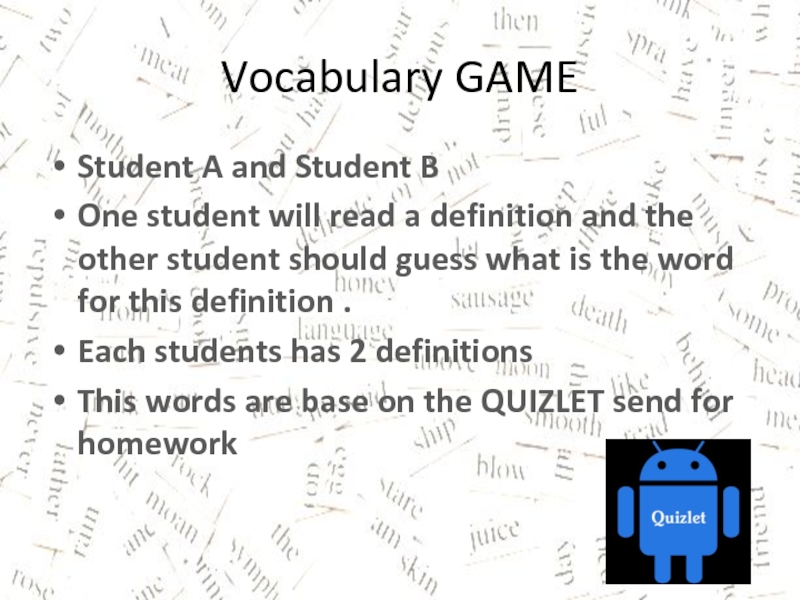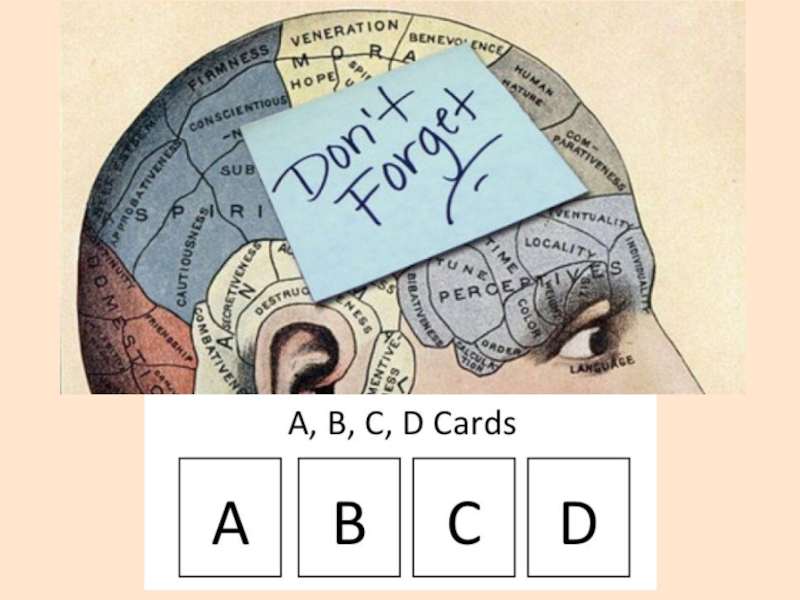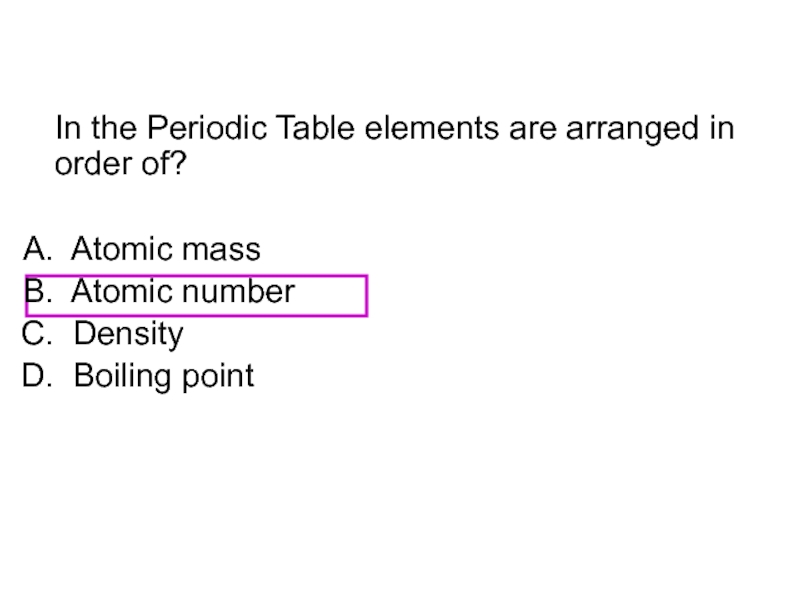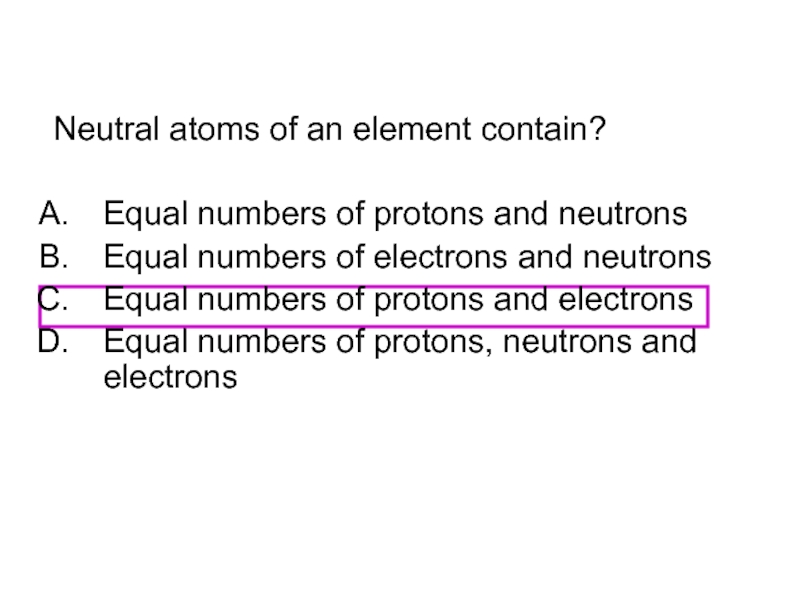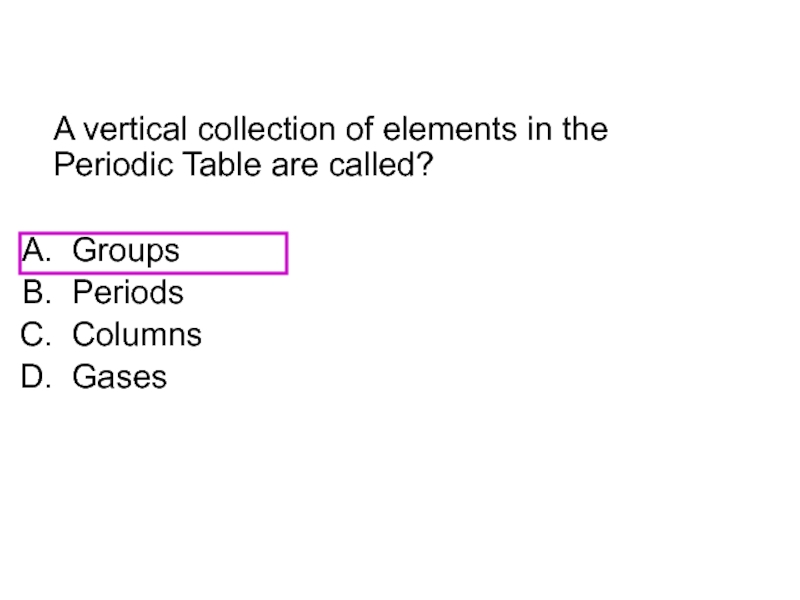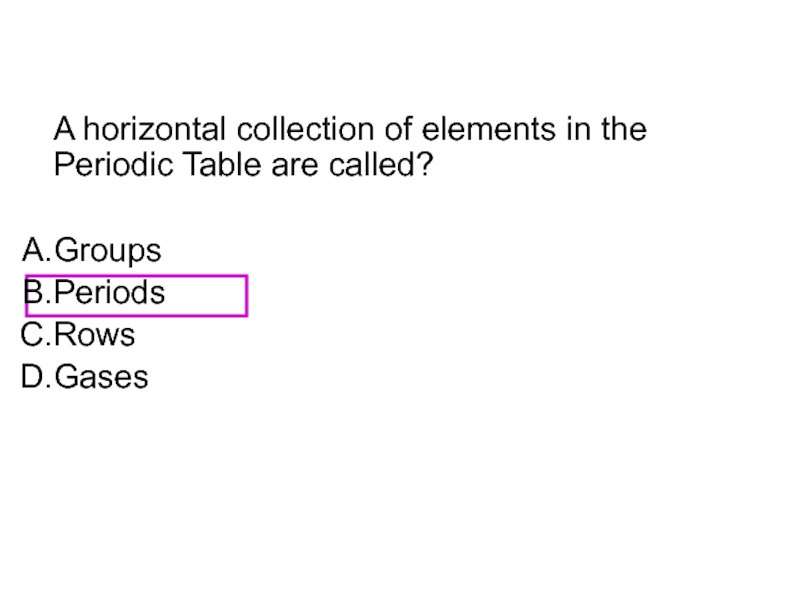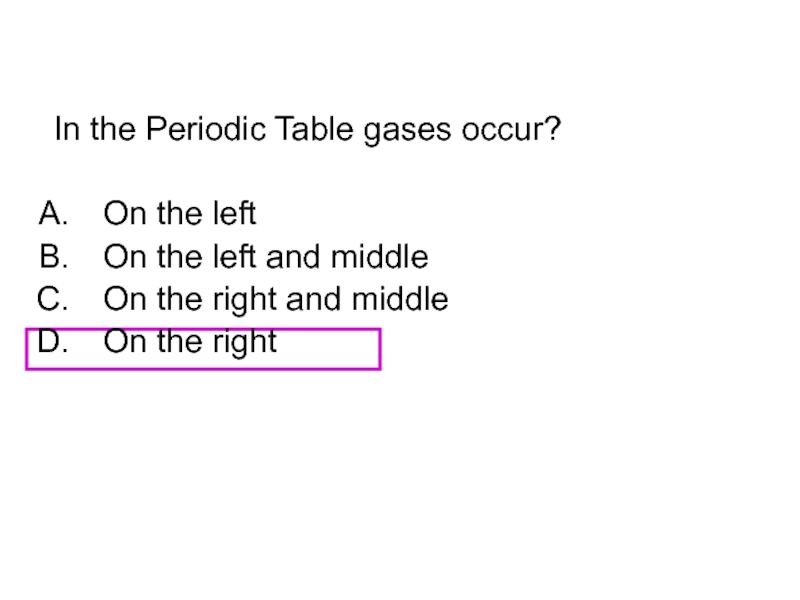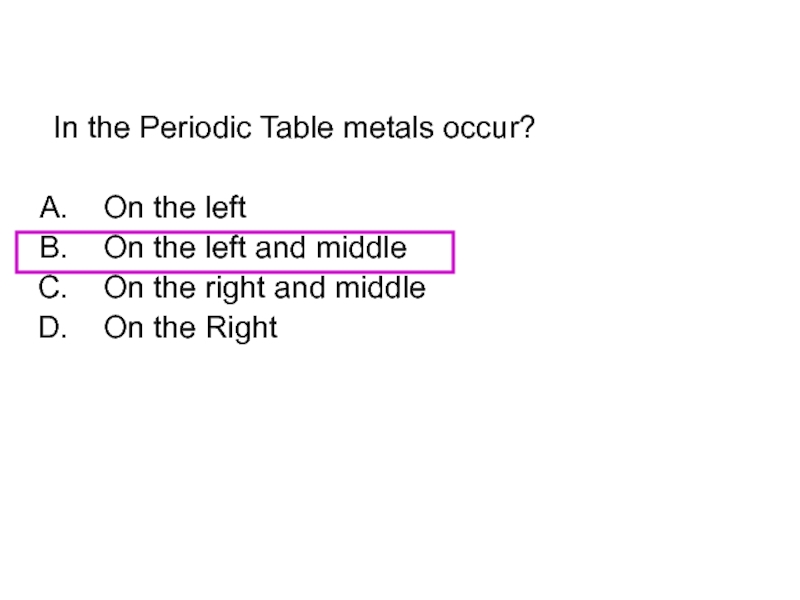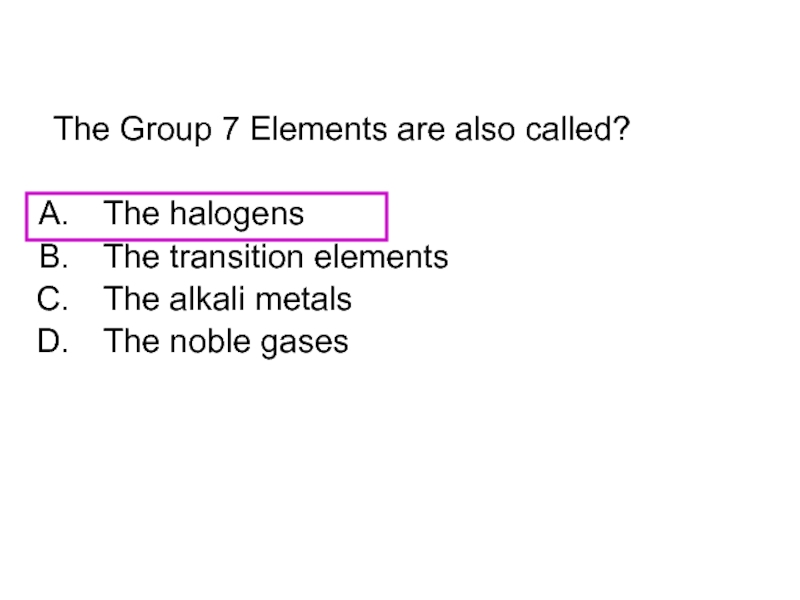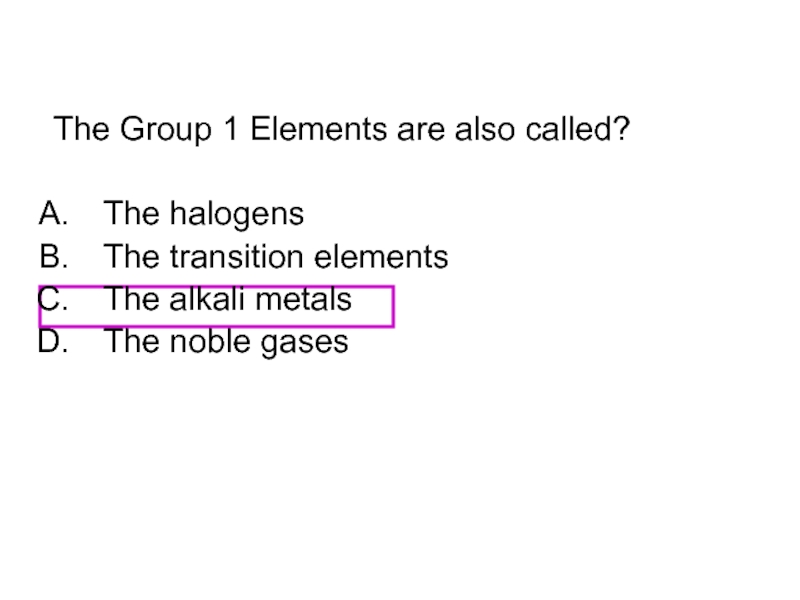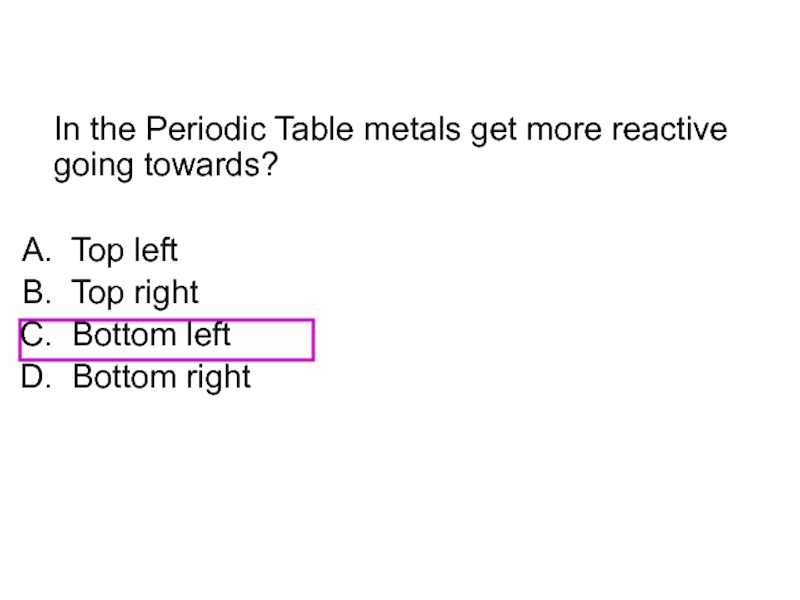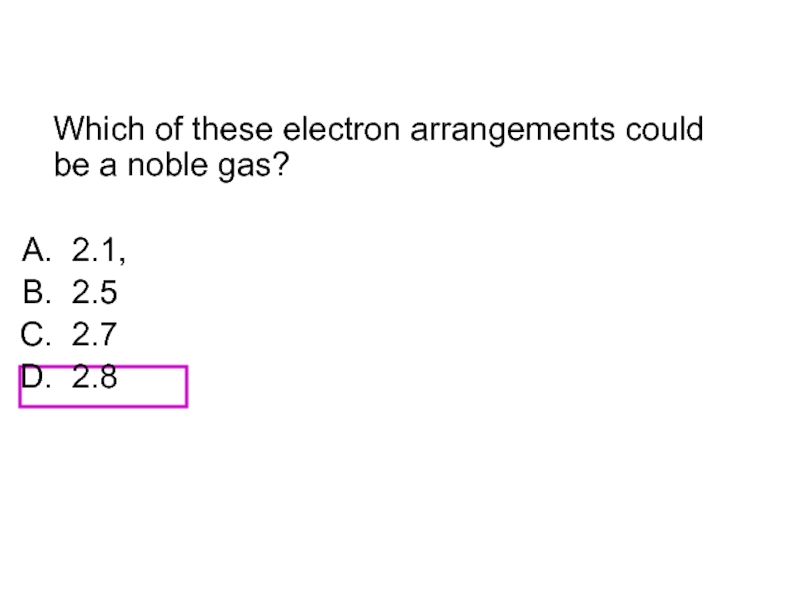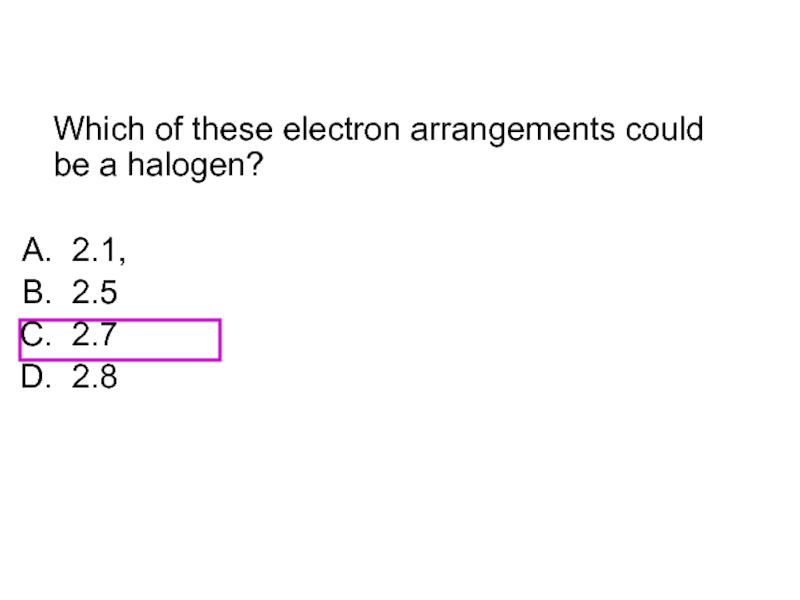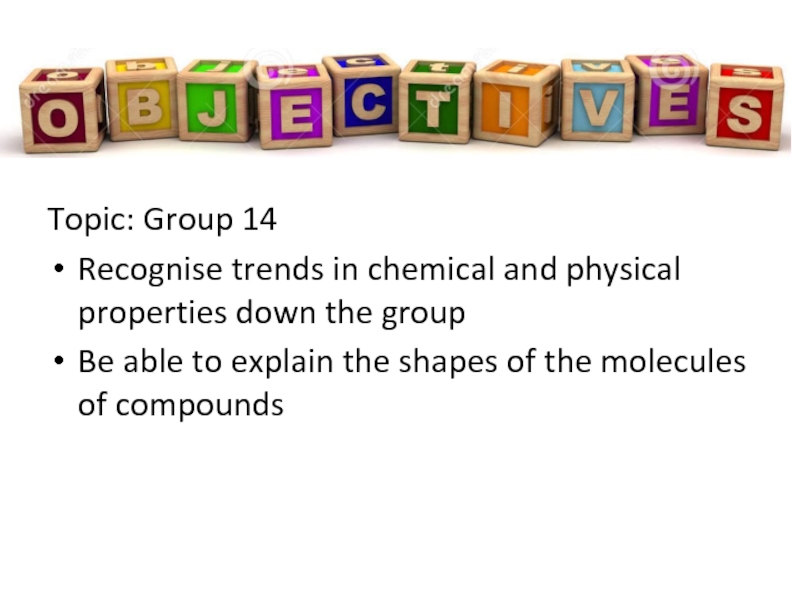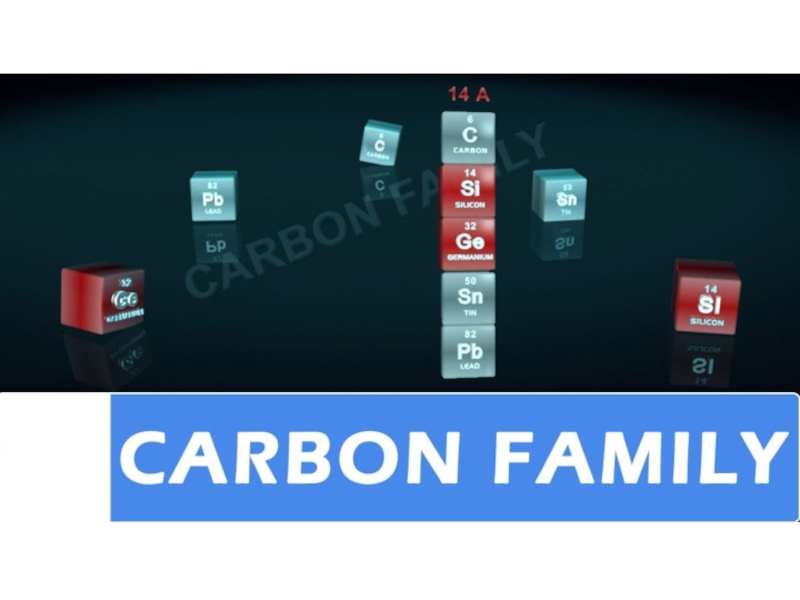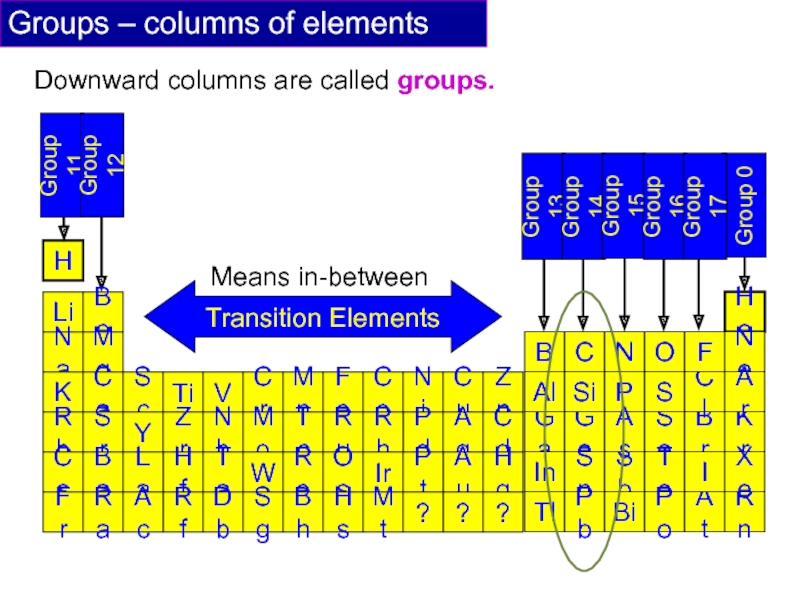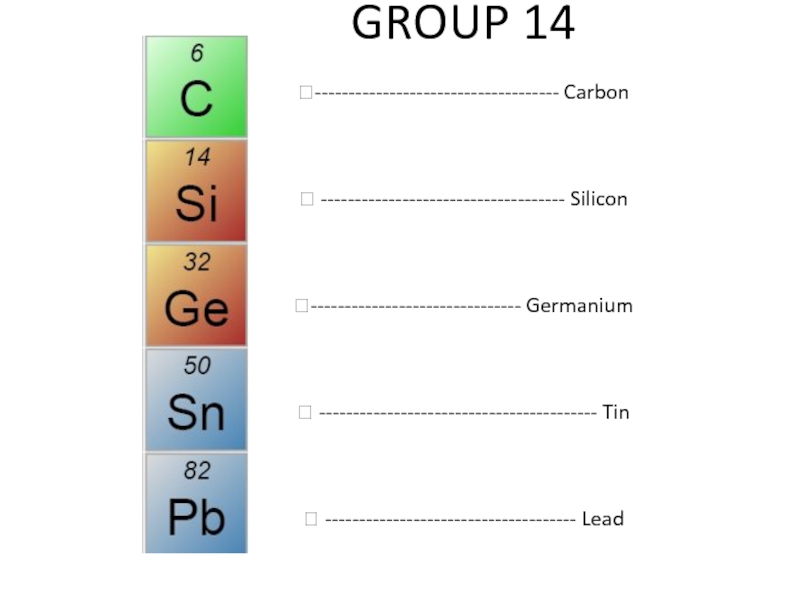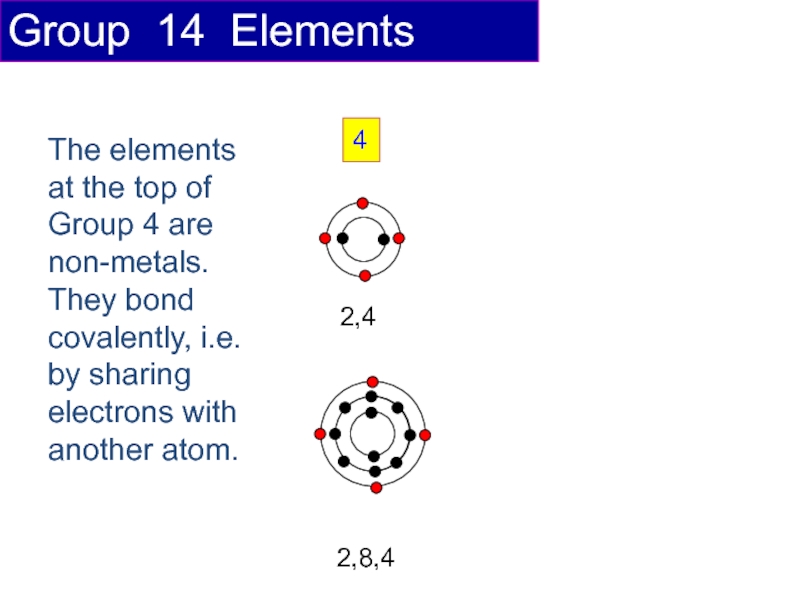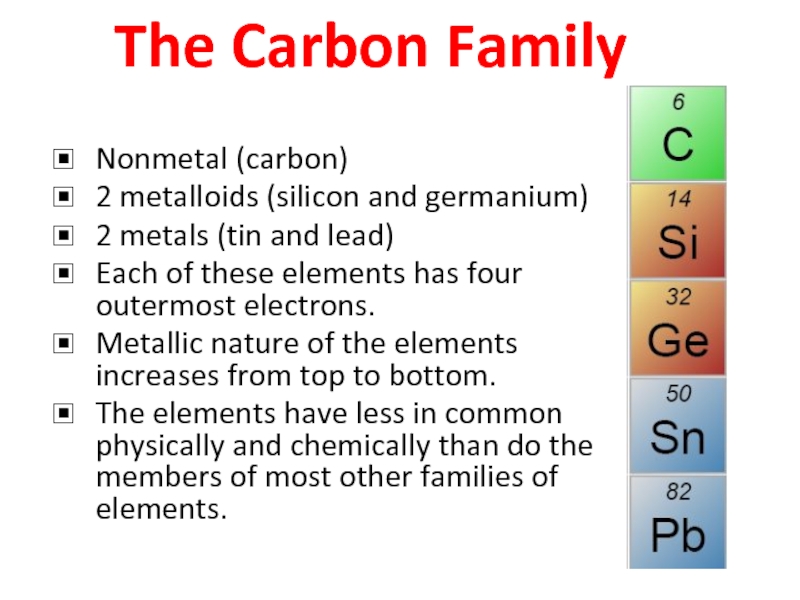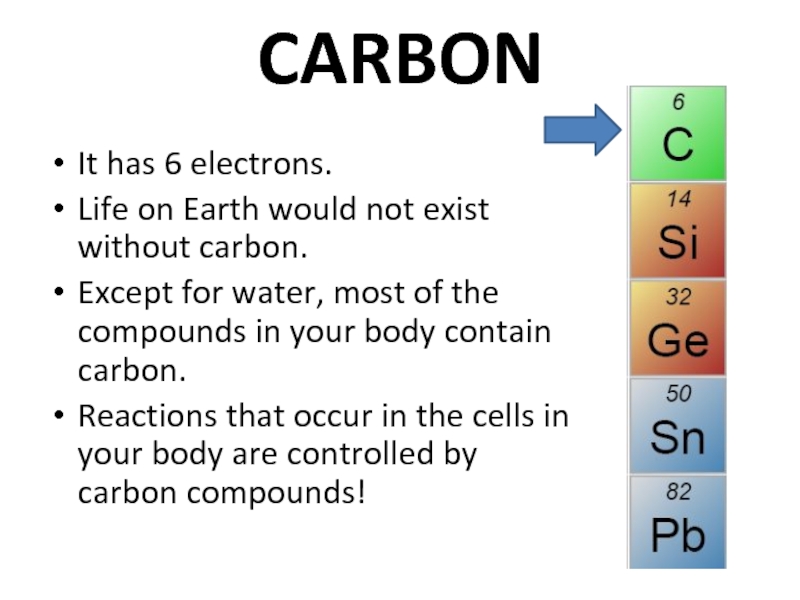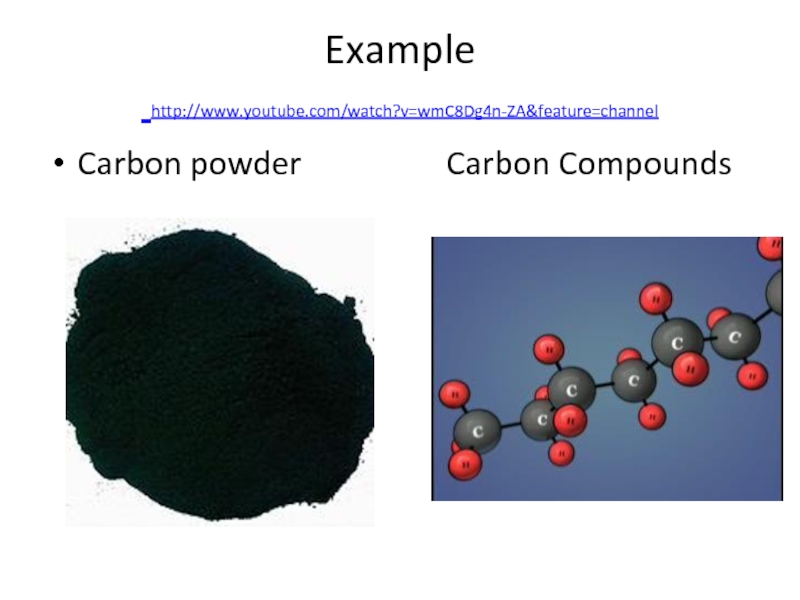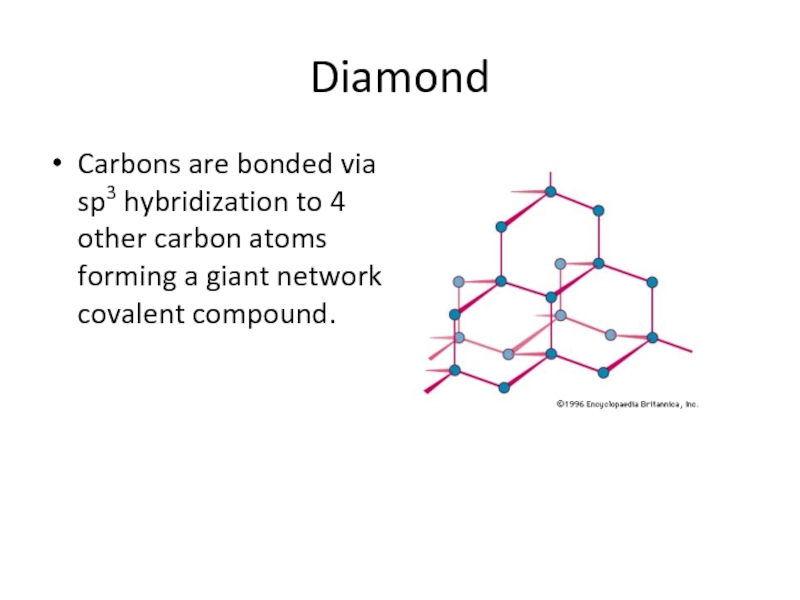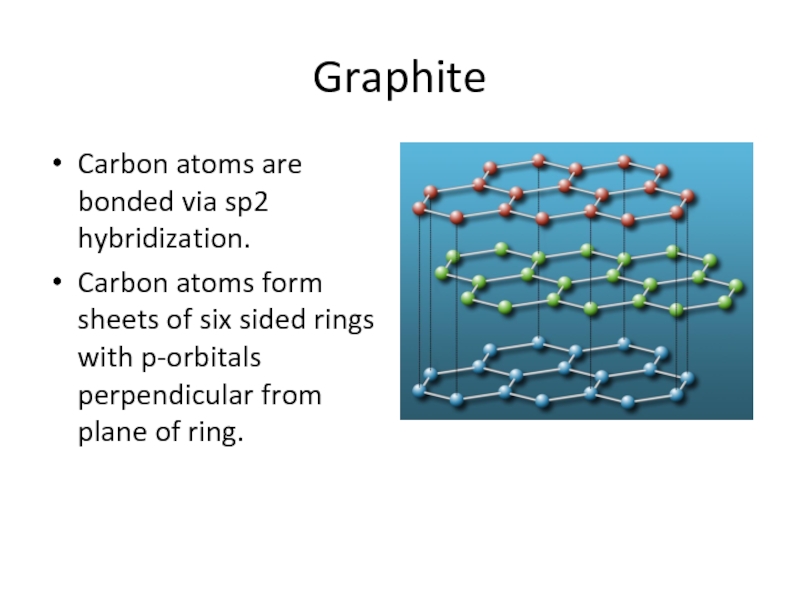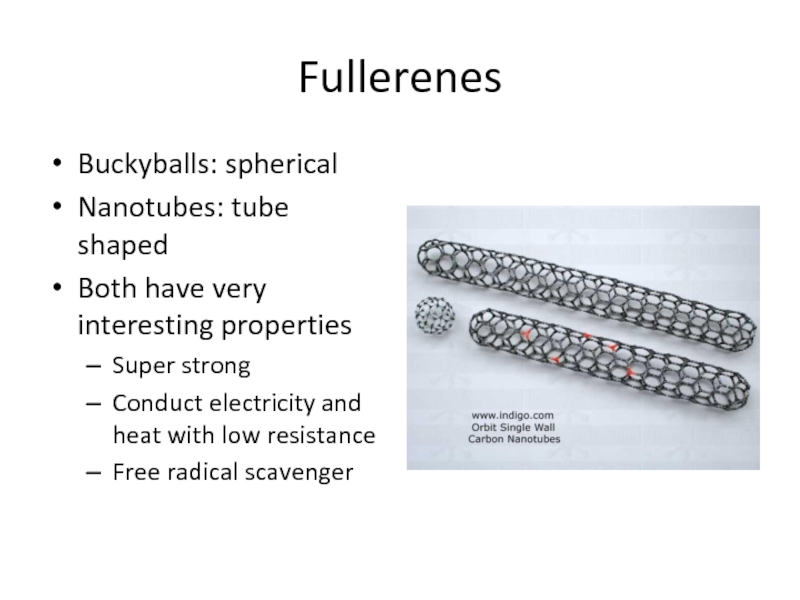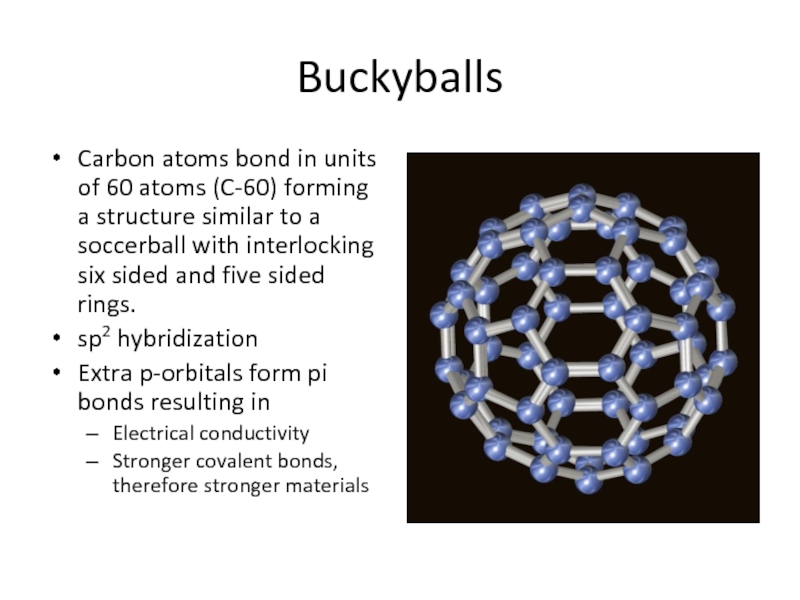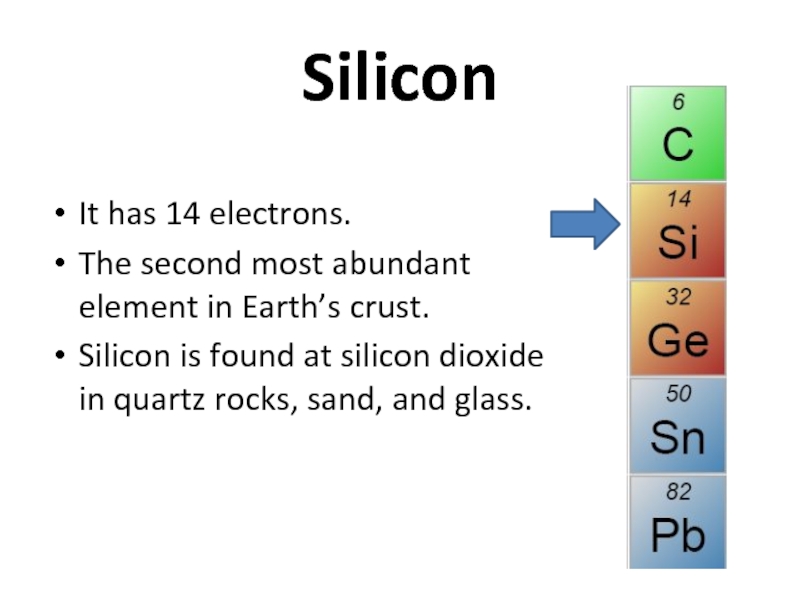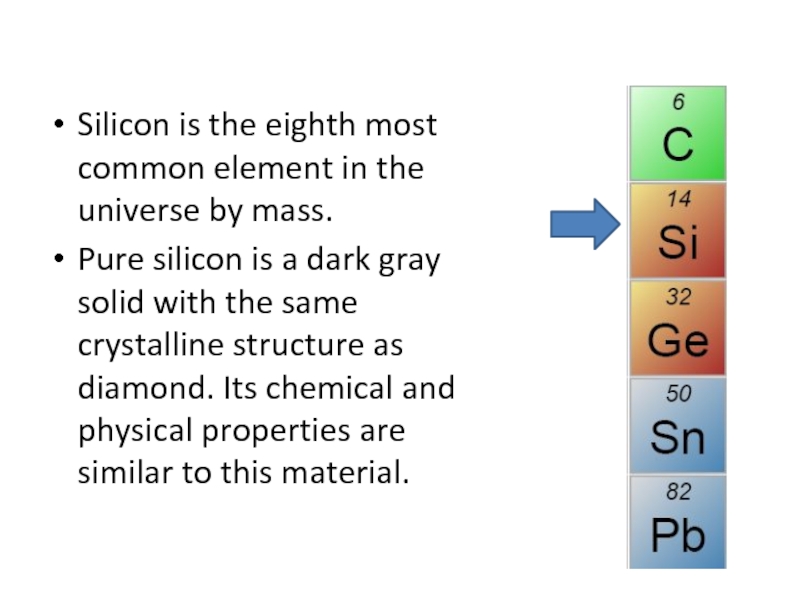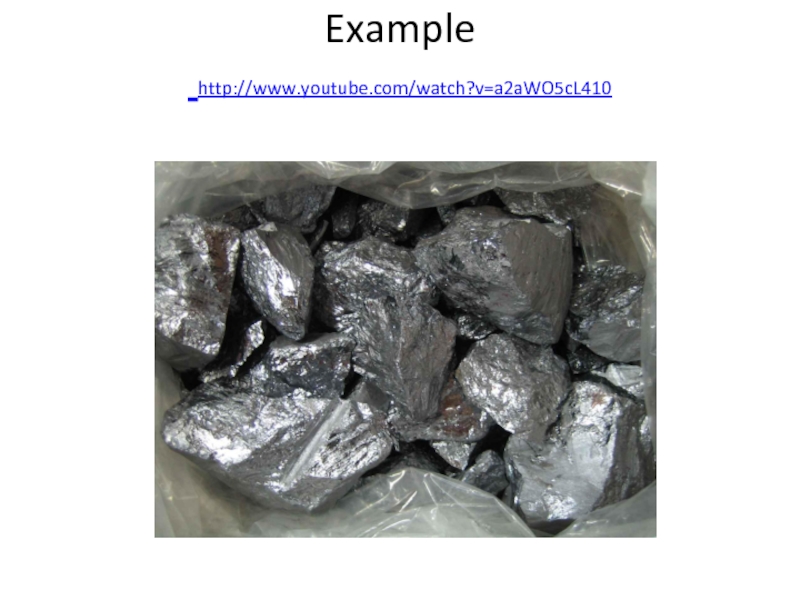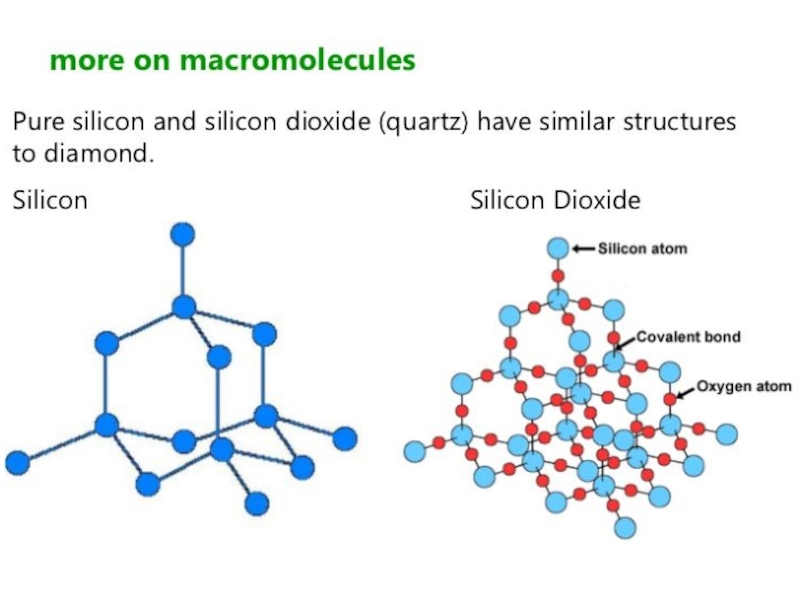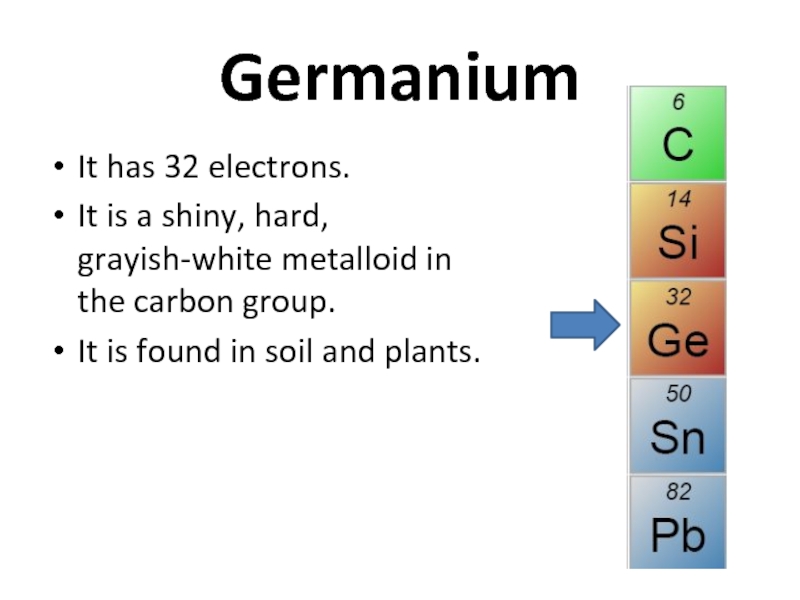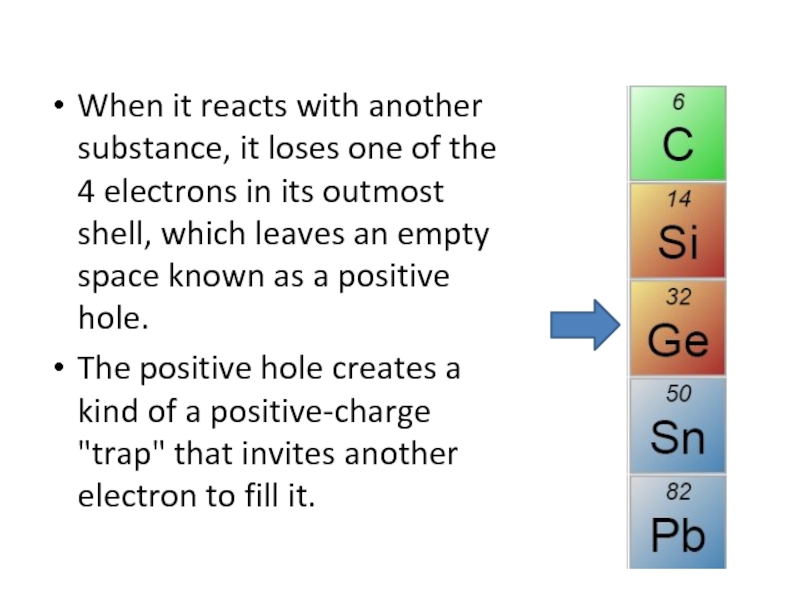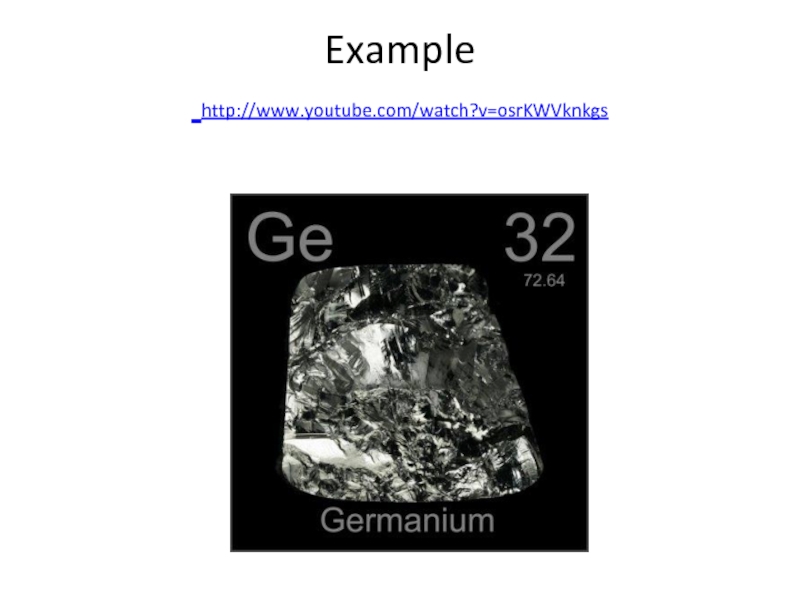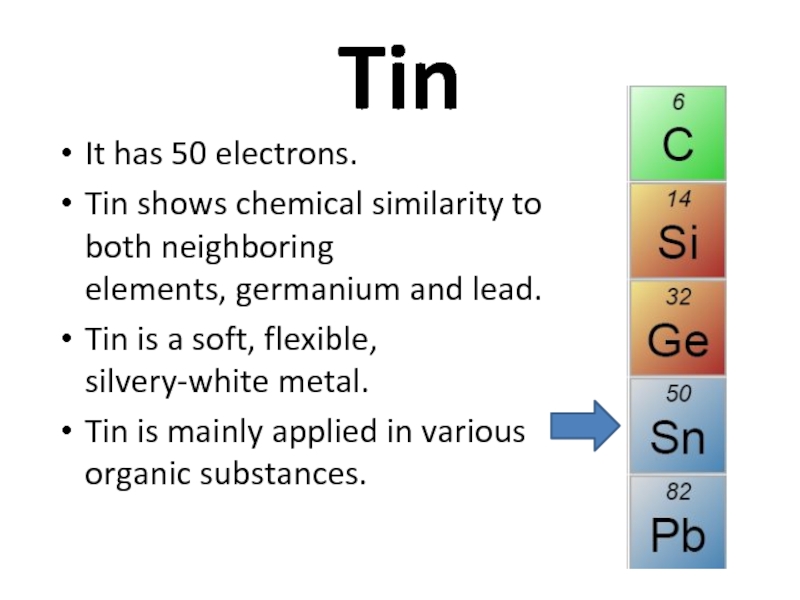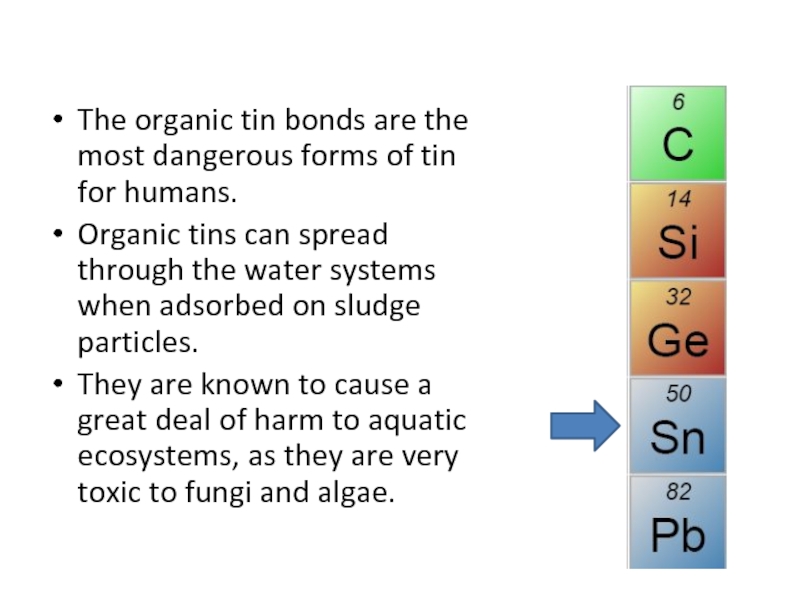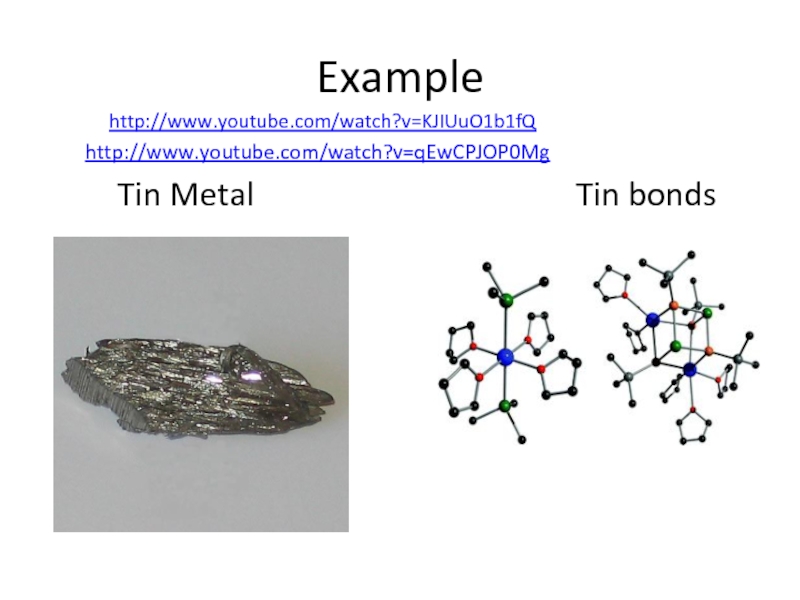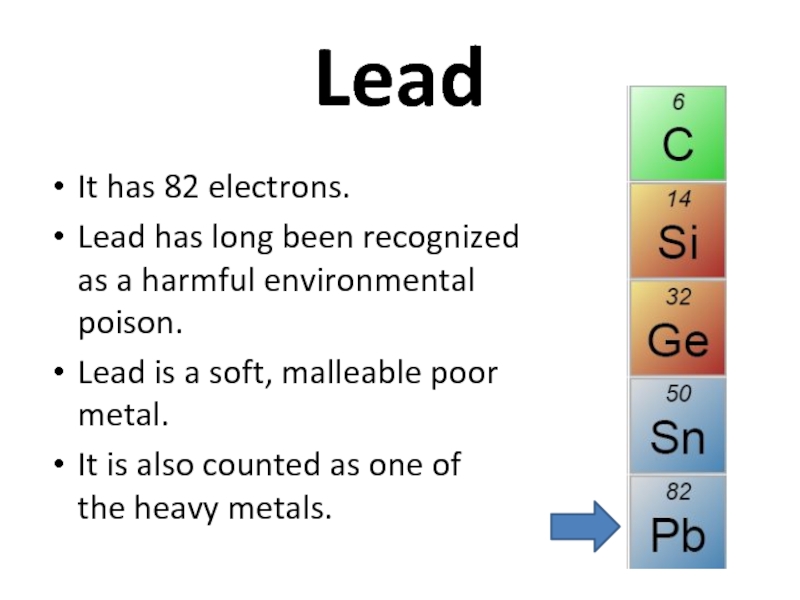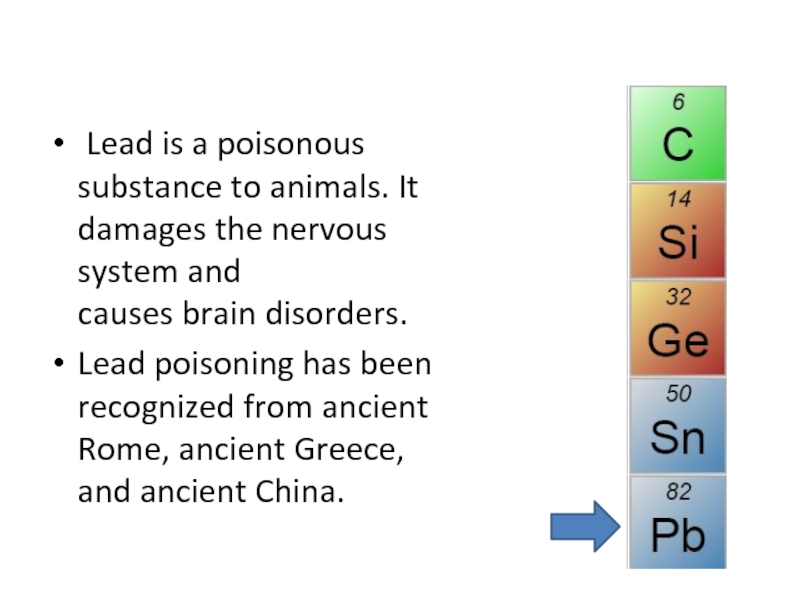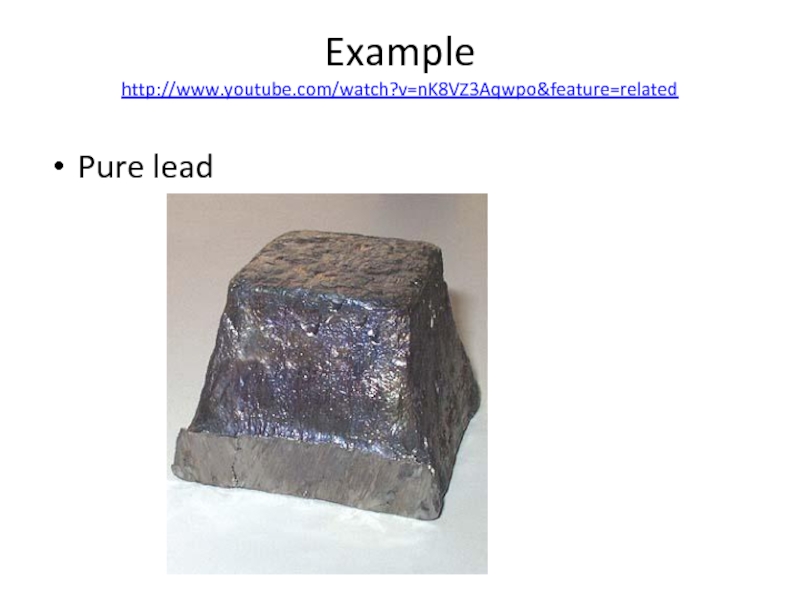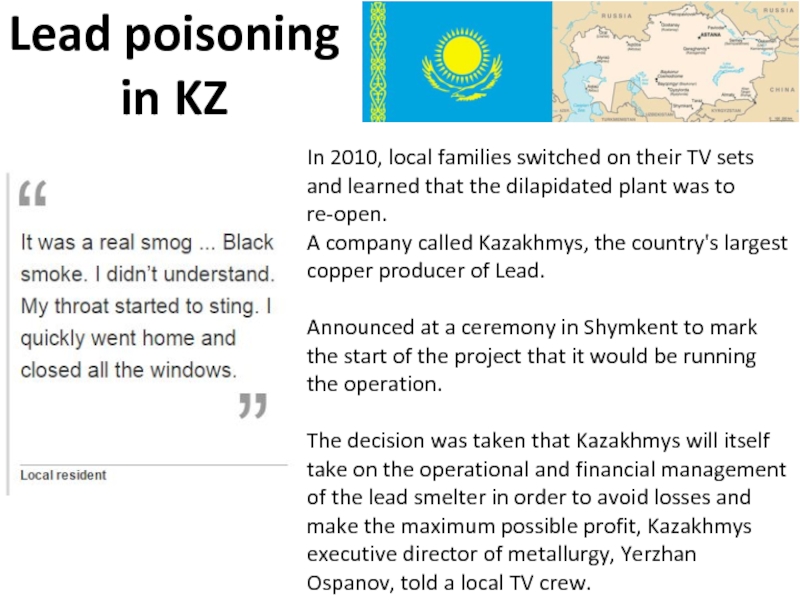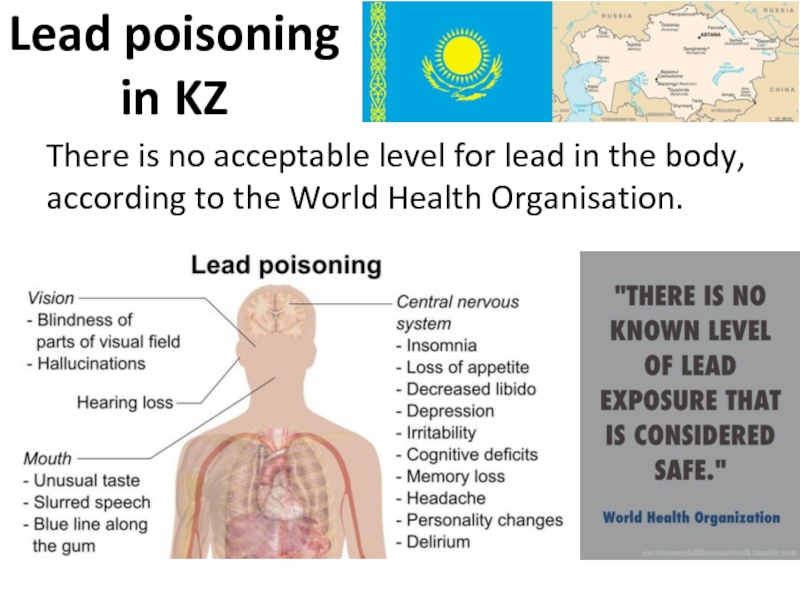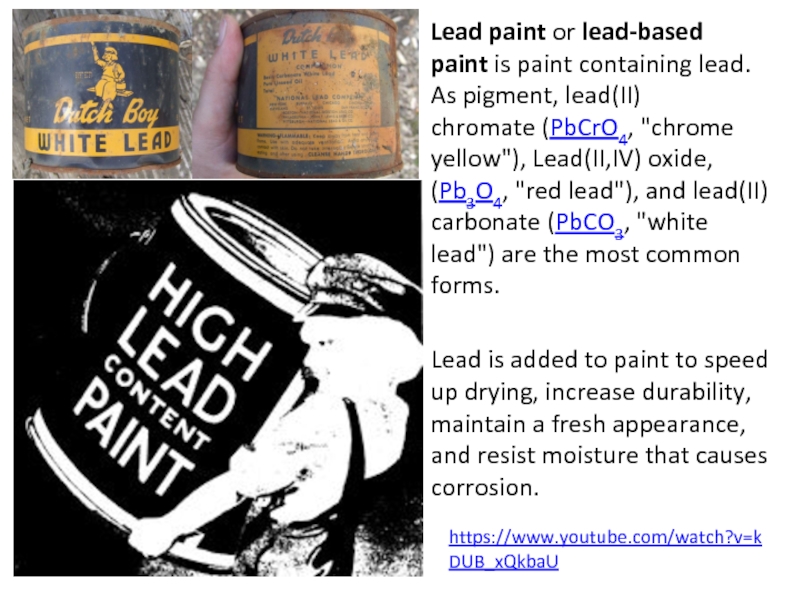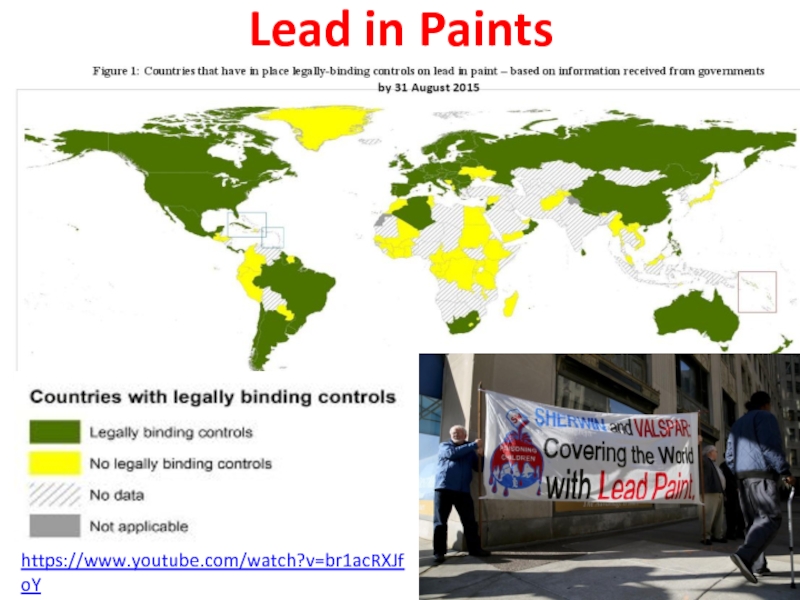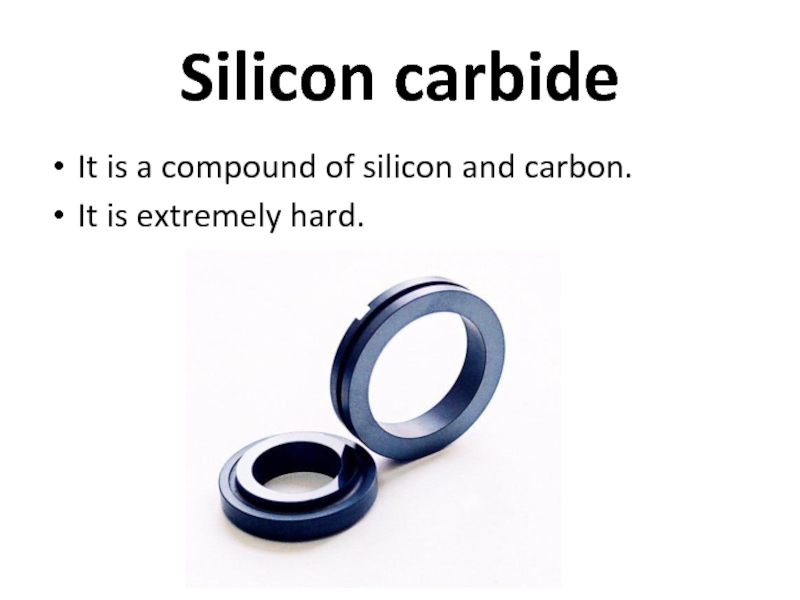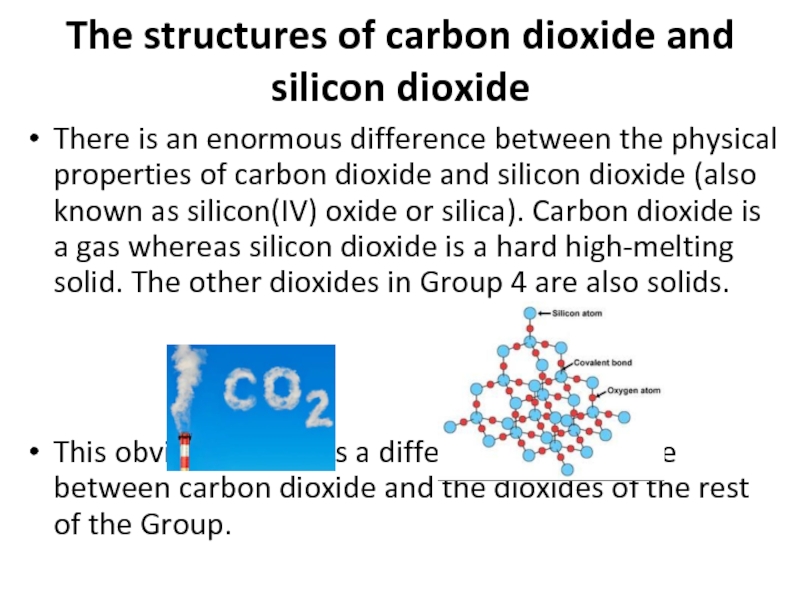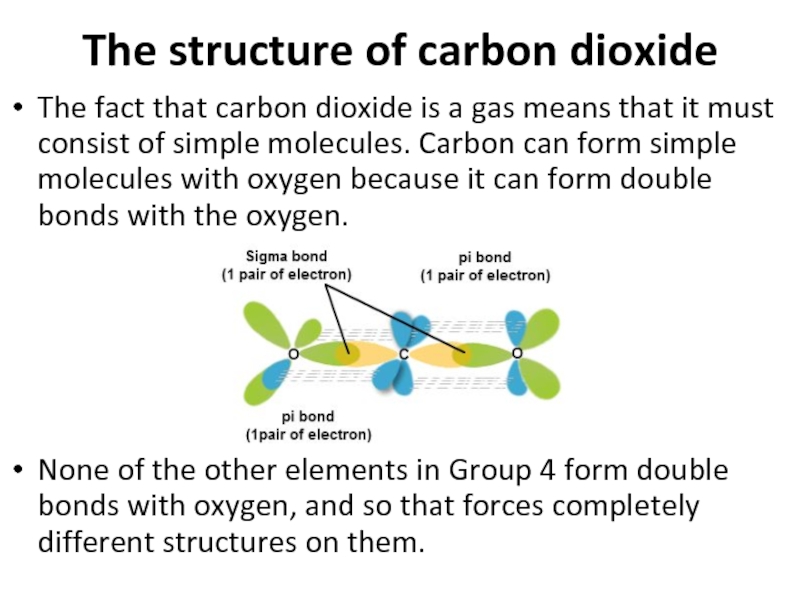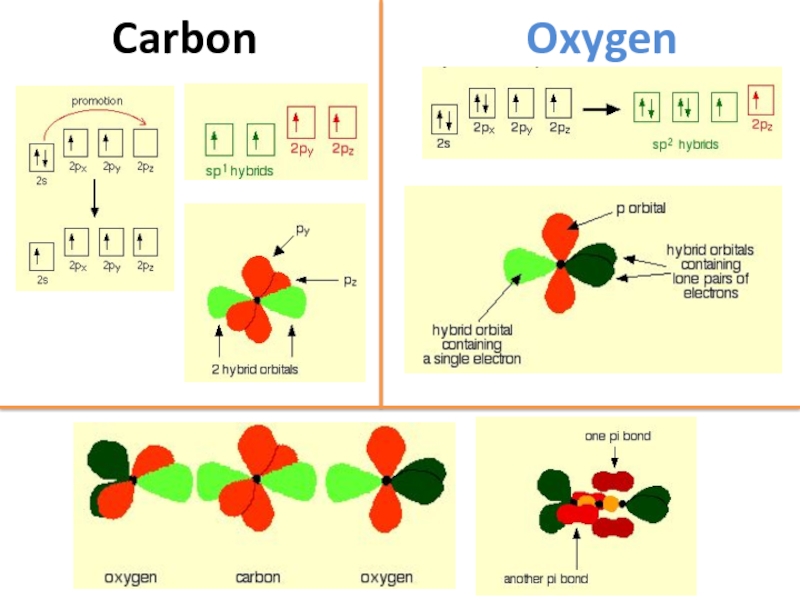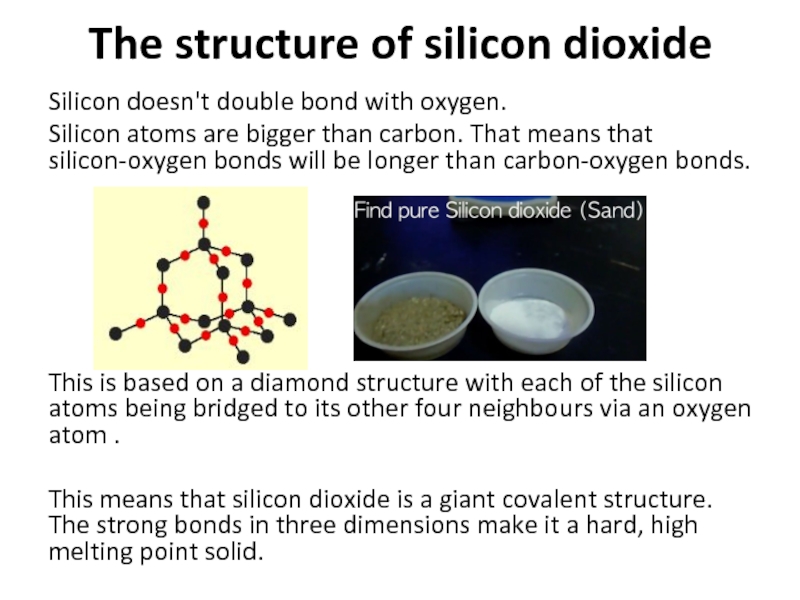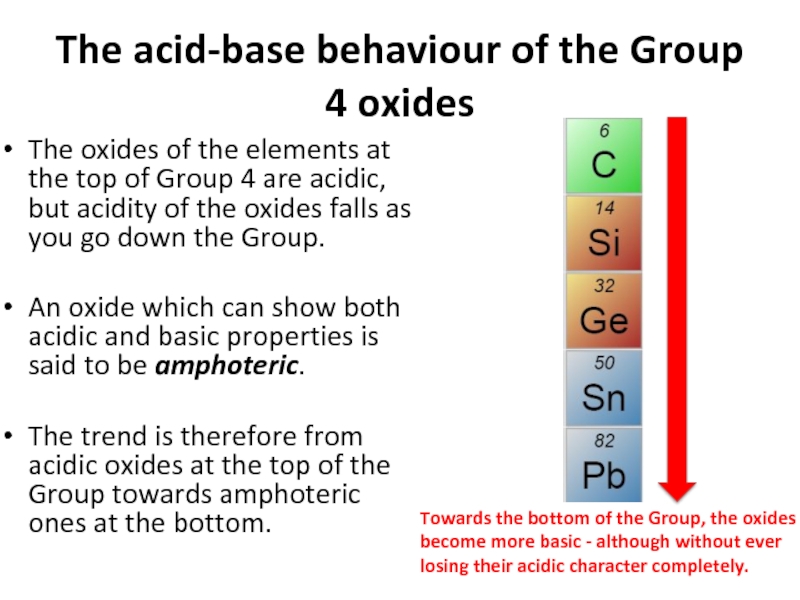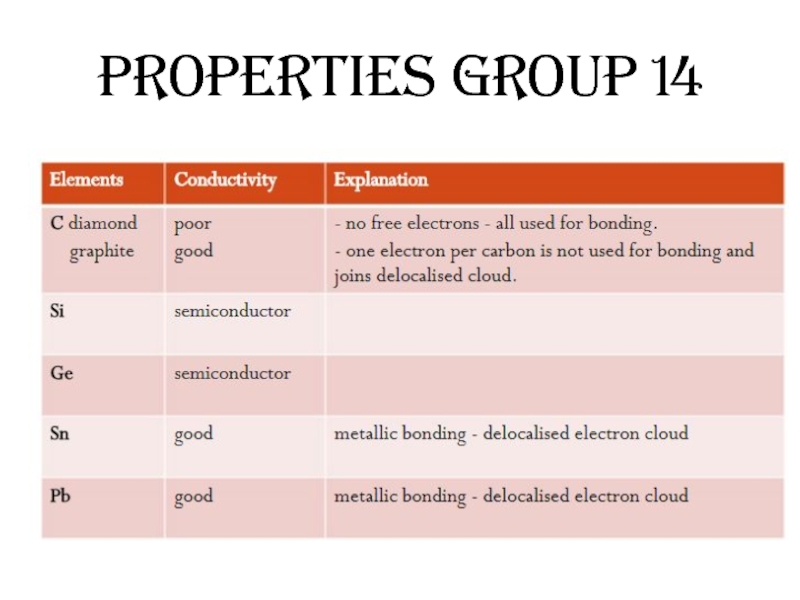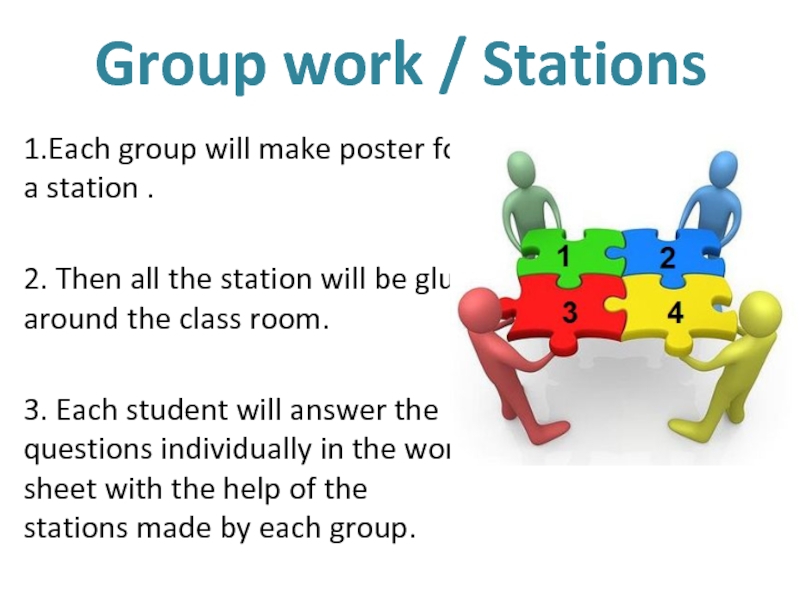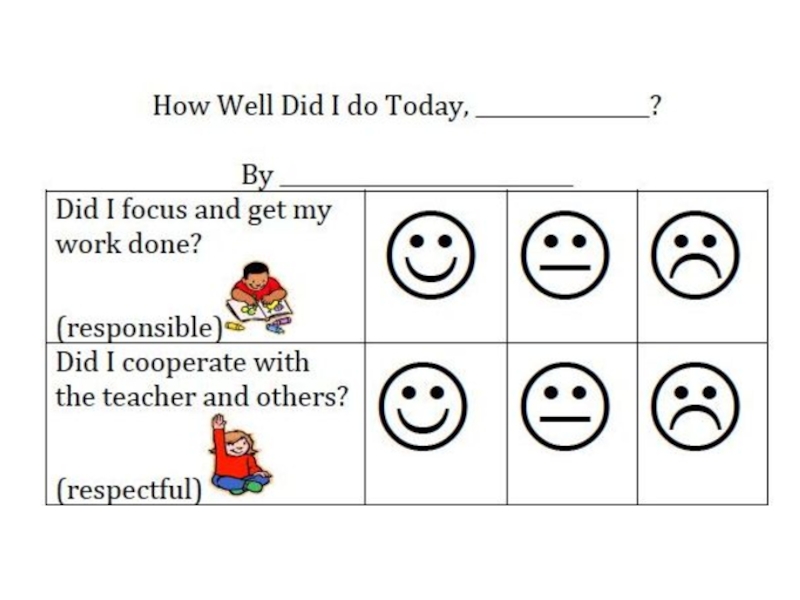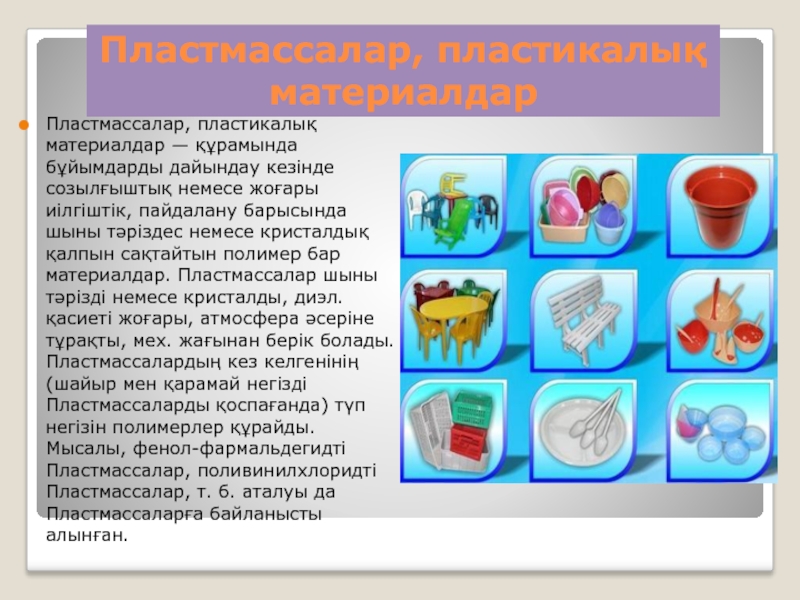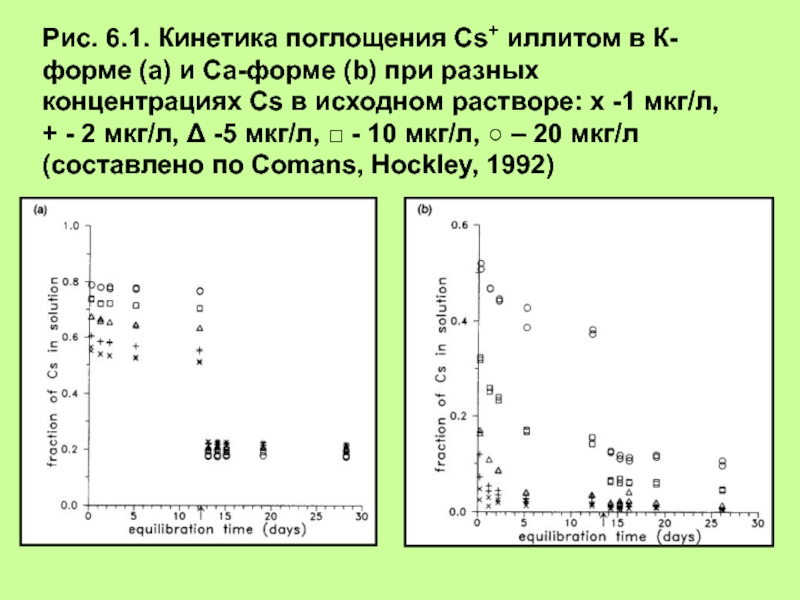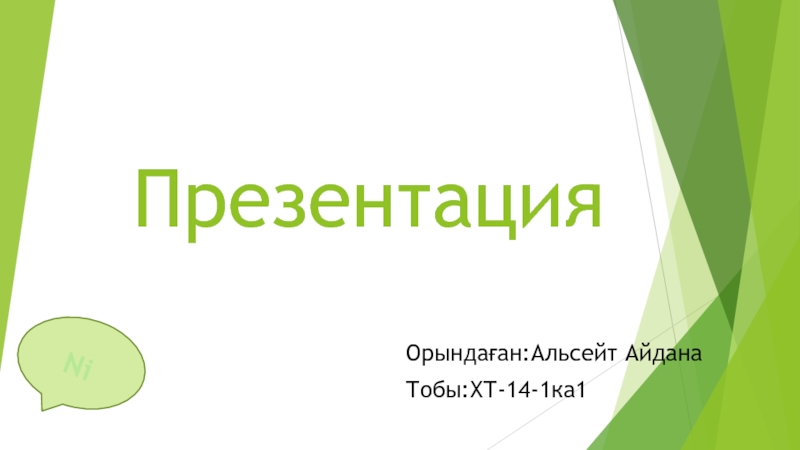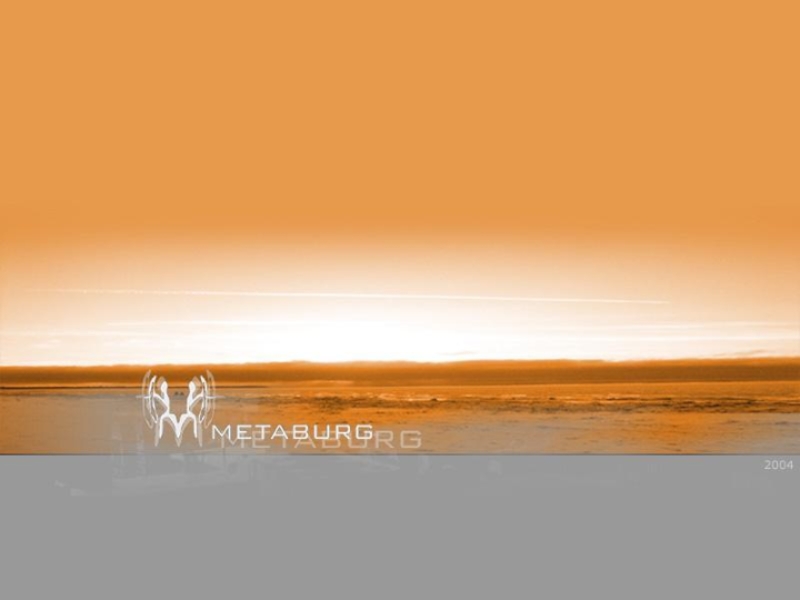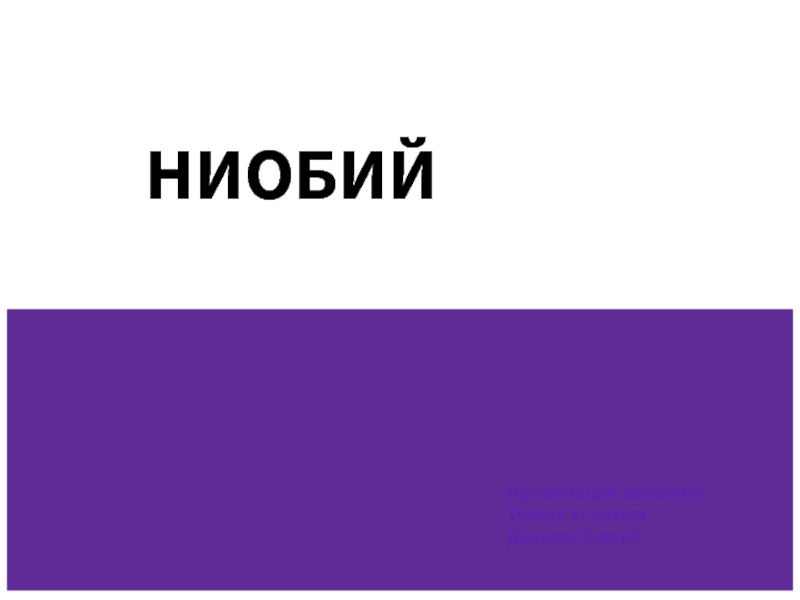- Главная
- Разное
- Дизайн
- Бизнес и предпринимательство
- Аналитика
- Образование
- Развлечения
- Красота и здоровье
- Финансы
- Государство
- Путешествия
- Спорт
- Недвижимость
- Армия
- Графика
- Культурология
- Еда и кулинария
- Лингвистика
- Английский язык
- Астрономия
- Алгебра
- Биология
- География
- Детские презентации
- Информатика
- История
- Литература
- Маркетинг
- Математика
- Медицина
- Менеджмент
- Музыка
- МХК
- Немецкий язык
- ОБЖ
- Обществознание
- Окружающий мир
- Педагогика
- Русский язык
- Технология
- Физика
- Философия
- Химия
- Шаблоны, картинки для презентаций
- Экология
- Экономика
- Юриспруденция
Vocabulary Game презентация
Содержание
- 1. Vocabulary Game
- 3. In the Periodic Table elements are
- 4. Neutral atoms of an element contain?
- 5. A vertical collection of elements in
- 6. A horizontal collection of elements in
- 7. In the Periodic Table gases occur?
- 8. In the Periodic Table metals occur?
- 9. The Group 7 Elements are also
- 10. The Group 1 Elements are also
- 11. In the Periodic Table metals get
- 12. Which of these electron arrangements could
- 13. Which of these electron arrangements could
- 14. Topic: Group 14 Recognise trends
- 15. The Carbon family group 14
- 16. Groups – columns of elements Downward columns are called groups. Na Mg Means in-between
- 17. GROUP 14 ?------------------------------------ Carbon
- 18. 4
- 19. The Carbon Family Nonmetal (carbon) 2 metalloids
- 20. CARBON It has 6 electrons. Life
- 21. Example http://www.youtube.com/watch?v=wmC8Dg4n-ZA&feature=channel Carbon powder Carbon Compounds
- 22. Diamond Carbons are bonded via sp3 hybridization
- 23. Graphite Carbon atoms are bonded via sp2
- 24. Fullerenes Buckyballs: spherical Nanotubes: tube shaped
- 25. Buckyballs Carbon atoms bond in units of
- 26. Silicon It has 14 electrons.
- 27. Silicon is the eighth most common element
- 28. Example http://www.youtube.com/watch?v=a2aWO5cL410
- 30. Germanium It has 32 electrons. It is
- 31. When it reacts with another substance, it
- 32. Example http://www.youtube.com/watch?v=osrKWVknkgs
- 33. Tin It has 50 electrons. Tin
- 34. The organic tin bonds are the most
- 35. Example http://www.youtube.com/watch?v=KJIUuO1b1fQ http://www.youtube.com/watch?v=qEwCPJOP0Mg
- 36. Lead It has 82 electrons.
- 37. Lead is a poisonous substance to
- 38. Example http://www.youtube.com/watch?v=nK8VZ3Aqwpo&feature=related Pure lead
- 39. Lead poisoning in KZ In
- 40. Lead poisoning in KZ There is
- 41. Lead paint or lead-based paint is paint containing lead. As pigment, lead(II) chromate (PbCrO4, "chrome
- 42. Lead in Paints https://www.youtube.com/watch?v=br1acRXJfoY
- 43. Silicon carbide It is a compound
- 44. The structures of carbon dioxide and silicon
- 45. The structure of carbon dioxide The fact
- 46. Carbon Oxygen
- 47. The structure of silicon dioxide Silicon doesn't
- 48. The acid-base behaviour of the Group 4
- 49. Properties Group 14
- 50. Group work / Stations 1.Each group
Слайд 1Vocabulary GAME
Student A and Student B
One student will read
Each students has 2 definitions
This words are base on the QUIZLET send for homework
Слайд 3
In the Periodic Table elements are arranged in order of?
Atomic
Atomic number
Density
Boiling point
Слайд 4
Neutral atoms of an element contain?
Equal numbers of protons and neutrons
Equal
Equal numbers of protons and electrons
Equal numbers of protons, neutrons and electrons
Слайд 5
A vertical collection of elements in the Periodic Table are called?
Periods
Columns
Gases
Слайд 7
In the Periodic Table gases occur?
On the left
On the left and
On the right and middle
On the right
Слайд 8
In the Periodic Table metals occur?
On the left
On the left and
On the right and middle
On the Right
Слайд 9
The Group 7 Elements are also called?
The halogens
The transition elements
The alkali
The noble gases
Слайд 10
The Group 1 Elements are also called?
The halogens
The transition elements
The alkali
The noble gases
Слайд 11
In the Periodic Table metals get more reactive going towards?
Top
Top right
Bottom left
Bottom right
Слайд 14
Topic: Group 14
Recognise trends in chemical and physical properties down
Be able to explain the shapes of the molecules of compounds
Слайд 17GROUP 14
?------------------------------------ Carbon
? ------------------------------------ Silicon
?------------------------------- Germanium
? ----------------------------------------- Tin
? ------------------------------------- Lead
Слайд 184
2,4
2,8,4
Group 14 Elements
The elements at the top of Group 4 are
Слайд 19The Carbon Family
Nonmetal (carbon)
2 metalloids (silicon and germanium)
2 metals (tin and
Each of these elements has four outermost electrons.
Metallic nature of the elements increases from top to bottom.
The elements have less in common physically and chemically than do the members of most other families of elements.
Слайд 20CARBON
It has 6 electrons.
Life on Earth would not exist without
Except for water, most of the compounds in your body contain carbon.
Reactions that occur in the cells in your body are controlled by carbon compounds!
Слайд 21Example
http://www.youtube.com/watch?v=wmC8Dg4n-ZA&feature=channel
Carbon powder
Слайд 22Diamond
Carbons are bonded via sp3 hybridization to 4 other carbon atoms
Слайд 23Graphite
Carbon atoms are bonded via sp2 hybridization.
Carbon atoms form sheets
Слайд 24Fullerenes
Buckyballs: spherical
Nanotubes: tube shaped
Both have very interesting properties
Super strong
Conduct
Free radical scavenger
Слайд 25Buckyballs
Carbon atoms bond in units of 60 atoms (C-60) forming a
sp2 hybridization
Extra p-orbitals form pi bonds resulting in
Electrical conductivity
Stronger covalent bonds, therefore stronger materials
Слайд 26Silicon
It has 14 electrons.
The second most abundant element in Earth’s
Silicon is found at silicon dioxide in quartz rocks, sand, and glass.
Слайд 27Silicon is the eighth most common element in the universe by
Pure silicon is a dark gray solid with the same crystalline structure as diamond. Its chemical and physical properties are similar to this material.
Слайд 30Germanium
It has 32 electrons.
It is a shiny, hard, grayish-white metalloid in the carbon group.
It is found in soil and plants.
Слайд 31When it reacts with another substance, it loses one of the
The positive hole creates a kind of a positive-charge "trap" that invites another electron to fill it.
Слайд 33Tin
It has 50 electrons.
Tin shows chemical similarity to both neighboring
Tin is a soft, flexible, silvery-white metal.
Tin is mainly applied in various organic substances.
Слайд 34The organic tin bonds are the most dangerous forms of tin
Organic tins can spread through the water systems when adsorbed on sludge particles.
They are known to cause a great deal of harm to aquatic ecosystems, as they are very toxic to fungi and algae.
Слайд 35Example
http://www.youtube.com/watch?v=KJIUuO1b1fQ
http://www.youtube.com/watch?v=qEwCPJOP0Mg
Tin Metal
Слайд 36Lead
It has 82 electrons.
Lead has long been recognized as a
Lead is a soft, malleable poor metal.
It is also counted as one of the heavy metals.
Слайд 37 Lead is a poisonous substance to animals. It damages the nervous
Lead poisoning has been recognized from ancient Rome, ancient Greece, and ancient China.
Слайд 39Lead poisoning
in KZ
In 2010, local families switched on their TV
A company called Kazakhmys, the country's largest copper producer of Lead.
Announced at a ceremony in Shymkent to mark the start of the project that it would be running the operation.
The decision was taken that Kazakhmys will itself take on the operational and financial management of the lead smelter in order to avoid losses and make the maximum possible profit, Kazakhmys executive director of metallurgy, Yerzhan Ospanov, told a local TV crew.
Слайд 40Lead poisoning
in KZ
There is no acceptable level for lead in
Слайд 41Lead paint or lead-based paint is paint containing lead. As pigment, lead(II) chromate (PbCrO4, "chrome yellow"), Lead(II,IV) oxide, (Pb3O4, "red
Lead is added to paint to speed up drying, increase durability, maintain a fresh appearance, and resist moisture that causes corrosion.
https://www.youtube.com/watch?v=kDUB_xQkbaU
Слайд 44The structures of carbon dioxide and silicon dioxide
There is an enormous
This obviously reflects a difference in structure between carbon dioxide and the dioxides of the rest of the Group.
Слайд 45The structure of carbon dioxide
The fact that carbon dioxide is a
None of the other elements in Group 4 form double bonds with oxygen, and so that forces completely different structures on them.
Слайд 47The structure of silicon dioxide
Silicon doesn't double bond with oxygen.
Silicon atoms
This is based on a diamond structure with each of the silicon atoms being bridged to its other four neighbours via an oxygen atom .
This means that silicon dioxide is a giant covalent structure. The strong bonds in three dimensions make it a hard, high melting point solid.
Слайд 48The acid-base behaviour of the Group 4 oxides
The oxides of the
An oxide which can show both acidic and basic properties is said to be amphoteric.
The trend is therefore from acidic oxides at the top of the Group towards amphoteric ones at the bottom.
Towards the bottom of the Group, the oxides become more basic - although without ever losing their acidic character completely.
Слайд 50Group work / Stations
1.Each group will make poster for a
2. Then all the station will be glue around the class room.
3. Each student will answer the questions individually in the work sheet with the help of the stations made by each group.
